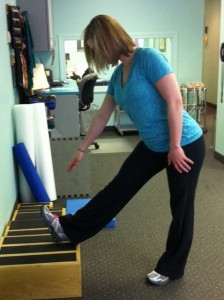A hamstring strain is a common injury that involves one or more of the 3 hamstring muscles in the back of your thigh. Hamstring strains usually occur during running, jumping and climbing. Hamstring strains are common among sprinters, hurdle jumpers and football players.
Hamstring Description-
The hamstring muscle group is made up of 3 muscles, the semitendinosus, semimembranosis and the biceps femoris muscles. These muscles are responsible for bending your knee and extending your hip.
Symptoms-
Symptoms include a sharp pain in the back of the leg, pain with bending over and stretching the hamstring muscles, and pain when contracting the hamstring muscle. Sometimes there may be bruising or swelling.
Treatment-
1. Rest, ice, compress and elevate for the first 48 hours.
2. Slowly begin gentle stretching and strengthening exercises.
3. Make a physical therapy appointment.
4. Physical therapy will include modalities such as ultrasound, massage, dry needling, electrical stimulation, ice/heat to decrease of pain/swelling and promote healing.
5. Physical therapy will provide you an exercise program to improve the flexibility in your muscles and improve your strength to return you to your daily activities.

